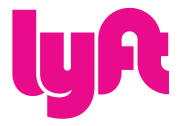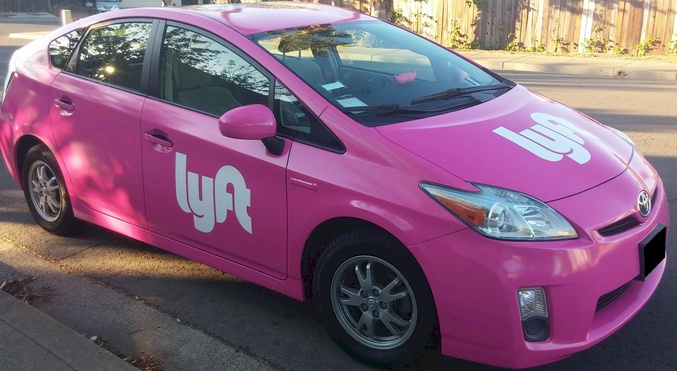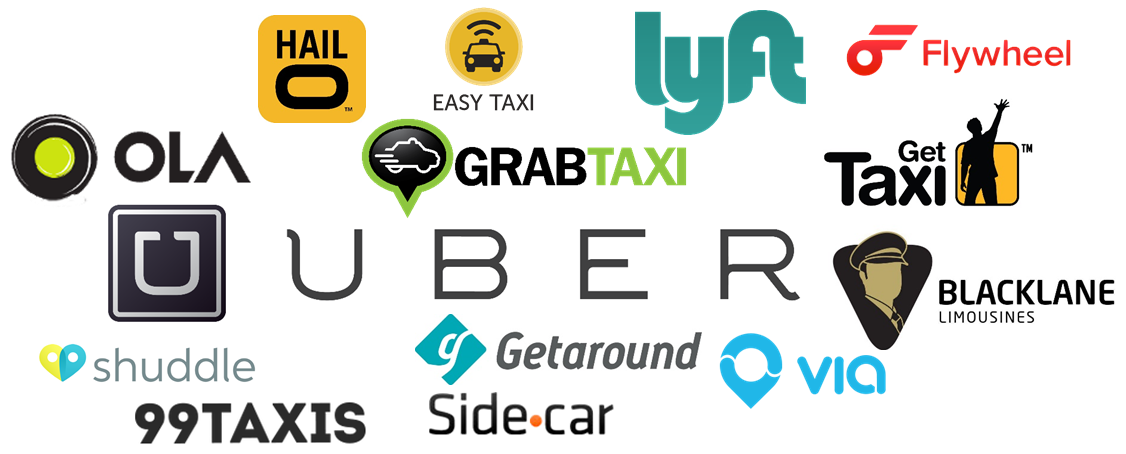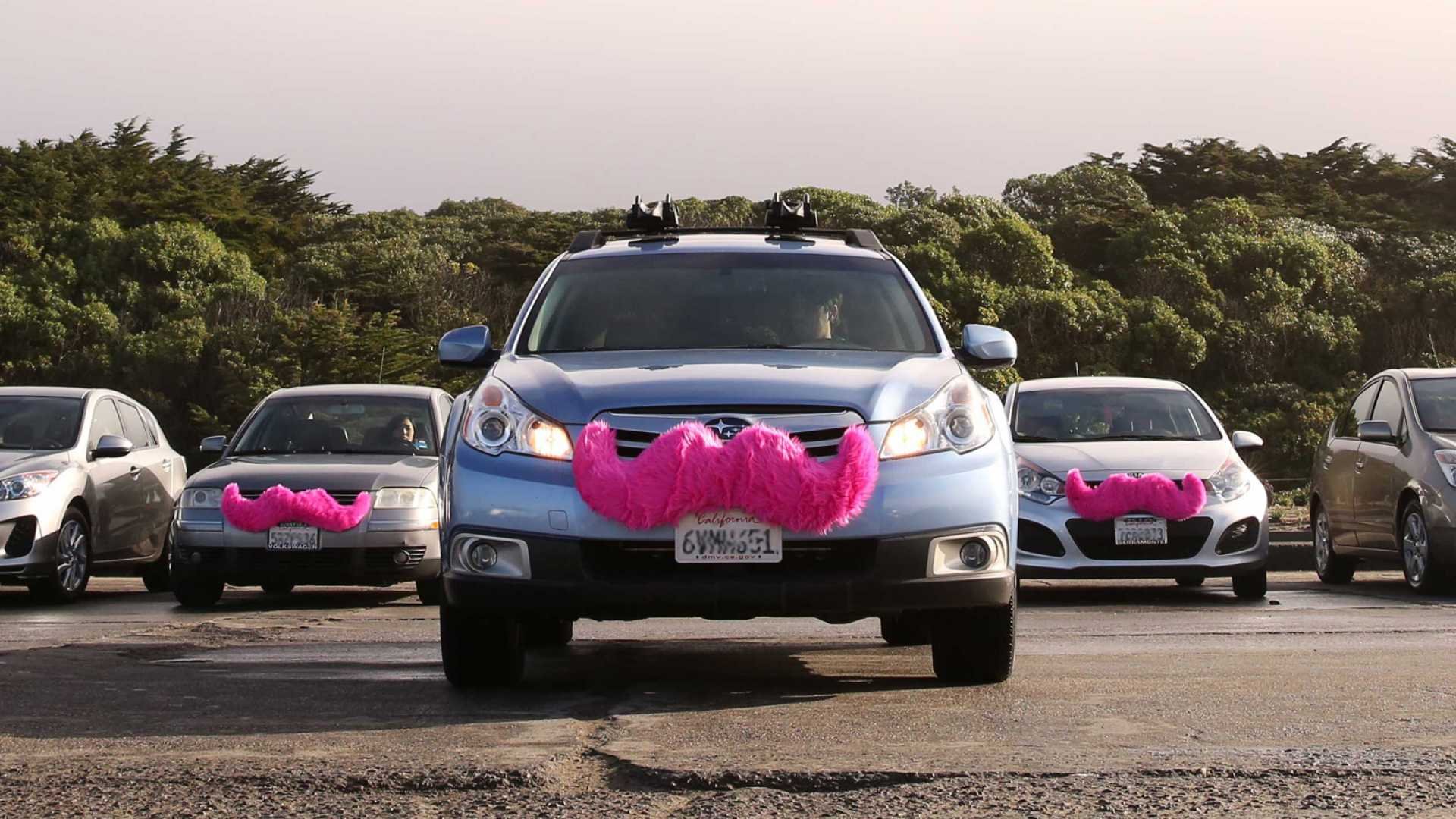Lyft, Inc.
Summary
- Lyft Inc. is an on-demand ride-hailing company established in 2012. Apart from ridesharing platform, the company offers a number of services.
- The business of Lyft Inc. started with carpooling business (Zimride) and so far the company has expanded to multiple business wings (revenue models) having the ride-sharing business at the core of it. The company generate substantially all of their revenue from ride-sharing marketplace that connects drivers and riders.
- The business segments of Lyft consist of ride-sharing marketplace, express drive, Lyft rentals, light vehicles, public transit, and Lyft autonomous.
- In Q4 2022, revenue of $1.2 billion grew 21 percent from $969.9 million in Q4 2021; net loss of $588.1 million compares with a net loss of $283.2 million in the fourth quarter of 2021.
- Lyft Inc. has reported revenue of $4,095.13 million for the year 2022. Revenue increased $886.8 million, or 28%, in 2022 as compared to the prior year, driven primarily by the increase in the number of Active Riders throughout 2022 as demand continued to recover from the impacts of COVID-19.
- Revenue of the company depends on the number of active riders, calculated by accounting unique phone numbers. During the latest three months of the financial year 2022, the company had 20,358 thousand active riders, and $57.72 revenue per active rider.
- After deducting sales and marketing, general and administrative, interest expenses, and taxes, the company has reported net loss of $1,584.51 million, which was a loss of $1,062.14 million. Net loss per share (basic and diluted) is $4.47 this year, and $3.17 a year earlier.
Brief Company Overview
 Lyft, Inc. (NASDAQ:LYFT; Class A) is a mobility sharing company established in 2012 that offers Transportation-as-a-Service (TaaS). Business segments of the company include ride-hailing, vehicles for hire, motorized scooters, rental cars, mobility as a service, bicycle-sharing system, and food delivery services. Offerings of the company also include access to shared bikes and scooters ("Light Vehicles") for shorter rides and first-mile and last-mile legs of multimodal trips, information about nearby public transit routes, and Lyft Rentals - an offering for renters who want to rent a car for a fixed period of time for personal use. Also, the company offers car maintenance, roadside assistance, and parking.
Lyft, Inc. (NASDAQ:LYFT; Class A) is a mobility sharing company established in 2012 that offers Transportation-as-a-Service (TaaS). Business segments of the company include ride-hailing, vehicles for hire, motorized scooters, rental cars, mobility as a service, bicycle-sharing system, and food delivery services. Offerings of the company also include access to shared bikes and scooters ("Light Vehicles") for shorter rides and first-mile and last-mile legs of multimodal trips, information about nearby public transit routes, and Lyft Rentals - an offering for renters who want to rent a car for a fixed period of time for personal use. Also, the company offers car maintenance, roadside assistance, and parking.
The company was originally incorporated in 2007 as Bounder Web, Inc., changed its name in 2008 to Zimride, Inc., and again changed its name to Lyft, Inc. in 2013 as Zimride founded Lyft in 2012. As of December 31, 2022, the company employed 4,419 employees. It has offices in multiple locations in the U.S. and in Montreal, Canada, Munich, Germany, and Minsk, Belarus.

Lyft is listed on The Nasdaq Global Select Market under the ticker symbol "LYFT". To date, Lyft has not declared or paid any cash dividend. As of March, 2023, trailing P/E of the company 0.90, P/S (ttm) is 0.84, P/B (mrq) 9.48, revenue per share (ttm) is $11.54, return on equity (ttm) is -183.19%, diluted earnings per share is negative $3.94.
Recent Developments
- Amid high competition from Lyft's arch-rival Uber, the company reshuffled its management team with co-founders Logan Green and John Zimmer stepping down from their positions. Around January 2023, Lyft conceded that it has to slash fares to stay competitive with Uber. David Risher will take over as CEO on April 17. Zimmer will step down as president on June 30.1
- On May 17, 2022, Lyft Inc. completed acquisition of PBSC, a global leader in bikeshare, which supplies stations and bikes to markets internationally, for a
total purchase price of $163.5 million inclusive of $14.1 million in estimated fair value of contingent consideration. The acquisition was treated as a business
combination and increases Lyft's scale in micromobility by leveraging PBSC’s deep sales experience and customer relationships. The acquisition was declared April 22, 2022.2 - The company underwent some restructuring plans during fourth quarter of 2022. It terminated 683 employees - which resulted into $29.5 million and $9.5 million in employee severance and net stock-based compensation expenses, respectively; the company also did some restructuring related to exit and sublease or cease use of certain facilities - which resulted into restructuring charges of $120.3 million in fourth quarter of 2022.3
- On June 21, 2022, PVIC and DARAG completed the Commutation Transaction, which effectively commuted and settled the previous Reinsurance
Agreement. As a result of the Commutation Transaction, the Company recognized a $36.8 million gain in cost of revenue in the three months ended June 30,
2022, including amortization of a portion of the previously recognized deferred gain.4
Financial Highlights
Q4'22 Highlights
In Q4 2022, revenue of $1.2 billion grew 21 percent from $969.9 million in Q4 2021. Relative to revenue of $1.1 billion in the third quarter of 2022, revenue grew 12 percent. Net loss of $588.1 million compares with a net loss of $283.2 million in the fourth quarter of 2021 and includes $201.3 million of stock-based compensation and related payroll tax expenses. Gross profit of $400 million increased from $418 million in Q4 2021.
Annual Performance Highlights
Lyft Inc. has reported revenue of $4,095.13 million for the year 2022. Revenue increased $886.8 million, or 28%, in 2022 as compared to the prior year, driven primarily by the increase in the number of Active Riders throughout 2022 as demand continued to recover from the impacts of COVID-19. Revenue of the company depends on the number of active riders, calculated by accounting unique phone numbers. During the latest three months of the financial year 2022, the company had 20,358 thousand active riders, and $57.72 revenue per active rider. Active Riders increased 31.9%, 15.9%, 7.2%, and 8.7% for the quarters ended March 31, 2022, June 30, 2022, September 30, 2022 and December 31, 2022, respectively, as compared to the same quarters in the prior year and Revenue per Active Rider increased 9.0%, 11.8%, 13.7% and 11.5% for the quarters ended March 31, 2022, June 30, 2022, September 30, 2022 and December 31, 2022, respectively, as compared to the same quarters in the prior year. Reported cost of revenue is $2,435.74 million during 2022. Cost of revenue increased $733.4 million, or 43%, in 2022 as compared to the prior year. The increase was due primarily to a $669.5 million increase in insurance costs driven by an increase in rider demand and recent economic factors including the high inflationary environment, increased litigation, and higher than expected losses across the commercial auto industry. Research and development expenditure of the company was $856.77 million in 2022, a decrease of $55.2 million, or 6%. he decrease was primarily due to a $32.4 million decrease in personnel-related costs and a $26.2 million decrease in stock-based compensation, which were primarily driven by reduced headcount following the transaction with Woven Planet in the third quarter of 2021.5 After deducting sales and marketing, general and administrative, interest expenses, and taxes, the company has reported net loss of $1,584.51 million, which was a loss of $1,062.14 million. Net loss per share (basic and diluted) is $4.47 this year, and $3.17 a year earlier.
At the year-end on December 31, Lyft Inc. has reported current assets of $2,582.90 million in 2022, down from $2,776.07 million in 2021. Total assets of the company during 2022 is $4,556.43 million, down from $4,773.88 year-on-year. Total current liabilities reported during the years 2022 and 2021 is $3,132.56 million and $2,516.36 million, respectively. Total liabilities during the end of the years has been $4,167.76 million and $3,432.67 million, respectively. The company had 361,552,359 and 336,335,594 Class A shares issued and outstanding as of December 31, 2022 and December 31, 2021. Accumulated deficit on December 31, 2022 is $5.75 million, and on December 31, 2021 it has been $2.51 million.
Net cash used in operating activities during 2022 is $237.28 million, down from the usage of $101.72 million a year earlier. Net cash provided by investment activities in the years has been $186.04 million and $267.01 million, respectively. Net cash used in financing activities for the years are $87.50 million and $72.47 million, respectively. Ending cash balance on December 31, 2022 is $391.82 million; it was $531.19 million a year earlier.
Business Overview
The business of Lyft Inc. started with carpooling business (Zimride) and so far the company has expanded to multiple business wings (revenue models) having the ride-sharing business at the core of it. The company generate substantially all of their revenue from ride-sharing marketplace that connects drivers and riders. Lyft collects service fees and commissions from drivers for their use of the company's ride-sharing marketplace. As drivers accept more rider leads and complete more rides, Lyft earns more revenue. The company also generates revenue from riders renting Light Vehicles, drivers renting vehicles through Express Drive, Lyft Rentals renters, car owners that use services available in the Lyft app, and by making the ride-sharing marketplace available to organizations through Lyft Business offerings, such as Concierge and Lyft Pass programs. In the second quarter of 2021, the company began generating revenues from licensing and data access agreements. In 2022, the company began generating revenues from the sale of bikes and bike station software and hardware sales substantially through the acquisition of PBSC Urban Solutions Inc (“PBSC”). The business of Lyft is subject to seasonal effects including factors such as the weather and certain holidays. Demand for the company's transportation network historically declined over the winter season and demand for the company's network of Light Vehicles has historically increased during more temperate and dry seasons.

Business Segments
The business segments of Lyft, or the company terms it as "transportation network" consist of ride-sharing marketplace, express drive, Lyft rentals, light vehicles, public transit, and Lyft autonomous.
Ridesharing marketplace
The main offering of Lyft is the peer-to-peer ridesharing. Lyft brings together the demand and supply of ride together through its platform. The platform of Lyft combines all the necessary details such as base charge, the distance covered, the per-minute charges, the per-mile cost, time of day, ride type, the chosen route, number of available drivers, current demand for rides, and any extra charges or taxes. After taking into consideration all these details as well as time to reach the destination, the final fare is determined. This ridesharing platform begins operating with a rider downloading the application, completing a profile, requesting a ride. Lyft coordinates the requests with available drivers nearby. Information about the vehicle and the driver is shown to the rider, and vice versa. They can then interact to come together and take the ride. Once the ride is complete, the final fare pops on both parties' app. Lyft receives a commission from the driver. For optimization purposes of all parties, the company has launched Lyft Maps in 2022. In addition to our standard rideshare offering, riders can select a variety of other rideshare offerings which include Wait & Save, Lux, Lux Black, Lux Black XL, and have access to Lyft Pink, Lyft’s transportation-focused membership.
Express Drive
Express Drive is the facility offered to those drivers who do not own a car but want to drive for Lyft. It is a car rental program for drivers. Through the Express Drive program, drivers can enter into rental agreements with, Flexdrive - an independently managed subsidiary of Lyft, and rental car partners of the company for vehicles that may be used to provide ridesharing services on the Lyft Platform. This segment also offers rental cars to those who have a car but does not meet the requirements of Lyft.
Lyft Rentals
In 2019, the company launched Lyft Rentals to offer a rental car option for users who have long-distance trips. Lyft Rentals is consumer facing and is therefore different from Express Drive, which is driver facing. Lyft Rentals is supported entirely by third-party partnerships.
Light Vehicles
Lyft has a network of shared bikes and scooters (“Light Vehicles”) in a number of cities to address the needs of users who are looking for options that are more active and often more cost-effective and efficient for shorter trips. These modes can also help supplement the first-mile and last-mile of a multi-modal trip with public transit.
Public Transit
Available in select cities, Lyft's Transit offering integrates third-party public transit data into the Lyft App to offer users a robust view of transportation options around them and allows them to see transit routes to their destinations at no cost.
Lyft Autonomous
Lyft's partnership with Motional has enabled the commercial deployment of a fleet of autonomous vehicles on its platform in Las Vegas. In July 2021, the company completed a multi-element transaction with Woven Planet, a subsidiary of Toyota Motor Corporation, for the divestiture of certain assets related to its self-driving vehicle division, Level 5, as well as commercial agreements for the utilization of Lyft rideshare and fleet data to accelerate the safety and commercialization of the automated-driving vehicles that Woven Planet is developing.
Competition
The market for TaaS (Transportation-as-a-Service) networks is intensely competitive and characterized by rapid changes in technology, shifting levels of supply and demand and frequent introductions of new services and offerings. In the industry competition is expected to continue, both from current competitors and new entrants in the market that may be well-established and enjoy greater resources or other strategic advantages.
Lyft's main ridesharing competitor in the United States and Canada is Uber, though the company also competes with other ridesharing transportation network companies and taxi cab and livery companies as well as traditional automotive manufacturers. The company's main competitors in the bike and scooter sharing market include Lime, Bird, Fifteen and Tier. Main competitors in the vehicle rental market include Enterprise and Avis Budget Group as well as emerging car-share marketplaces. Lyft also competes with other manufacturers of bike and scooter sharing equipment for sales of such equipment, particularly in markets outside of the United States.

Additionally, there are other non-U.S.-based TaaS network companies, non-ridesharing transportation network companies and traditional automotive manufacturers that may expand into the United States and Canada. There are also a number of companies developing autonomous vehicle technology and TaaS offerings that may compete with us in the future, including Alphabet (Waymo), Amazon (Zoox), Apple, Aurora, Baidu, General Motors (Cruise), Motional, and Tesla as well as many other technology companies and automobile manufacturers and suppliers.
The company can compete favorably, however, many of Lyft's competitors and potential competitors are larger and have greater brand name recognition, longer operating histories, larger marketing budgets and established marketing relationships, access to larger customer bases and significantly greater resources for the development of their offerings.
Company History
Lyft Inc. started its journey in 2007 when Logan Green started a company called "Zimride" to offer long-distance ride-sharing between college campuses. Green got the idea when he was traveling to Zimbabwe saw locals using crowdsourced carpool networks to get around. The name Zimride was derived from Zimbabwe.6 John Zimmer, an analyst at Lehman Brothers and carpooling enthusiast who arranged shared trips between Cornell University in upstate New York and New York City during his college years, sees a post on Facebook about Zimride and connects with Green through a mutual friend.
In 2012 the company launches in San Francisco. Lyft drivers would affix a large fuzzy mustache in front the the car which would bring Lyft instant recognition. The mustaches are the brainchild of Ethan Eyler, the founder of Carstache, who sold a number of the decorations to Zimmer and Green. Eyler later joined Lyft as a brand manager.7 During that time, Lyft was not a standalone company but a part of Zimride. In January 30, 2013, Zimride/Lyft raises $15 million in funding during a Series B round that was led by the Founders Fund and the company expands service to Los Angeles. In May 2013, Zimride was renamed Lyft. The company shifts its focus to short-haul ride sharing, instead of longer rides for college students. It raises $60 million in its Series C venture financing round led by Andreessen Horowitz.

In June, 2013, Lyft sells its Zimride private carpool business to the parent company of Enterprise Rent-A-Car. The terms of the deal are not disclosed, but the move allows Zimmer and Green to focus solely on the growth of Lyft. Through 2014, the company keeps expanding its business to more locations. In April, 2014, the company announced that it will stop taking commissions from drivers, and tries cutting customer fares by 20%. Meanwhile, the company completes another round of funding, and takes in $250 million from Coatue, Alibaba, and Andreessen Horowitz, bringing its total amount raised to $332.5 million. In March, 2015, the Lyft raises another $530 million from Japanese online retailer Rakuten Inc. Meanwhile, Lyft announces Lyft Carpool, which lets it go back to its Zimride roots by allowing passengers to carpool outside of city limits. In September of the same year, the company gets an ally in Asia. The preeminent Chinese ride sharing company, Didi Chuxing, invests $100 million in Lyft. The companies announce a strategic partnership that allows Lyft app users to hail a Didi car in China, and vice versa. The companies joined forces to create global hedge against the growth of Uber. After partnering with Didi in September, Lyft announces in December the same year that its alliance will include Ola Cabs (India), and GrabTaxi (South-East Asia). All of the companies are market leaders in their respective region, and are backed by Softbank, a Japanese conglomerate founded by Masayoshi Son. More companies joined the alliance as a hedge against Uber, which has grown quickly. Meanwhile, Lyft received $500 million investment from General Motors, launched Express Drive - whereby the drivers will be able to rent a GM car and drive it for Lyft. Walmart tried deliveries using Lyft, but later ended the contracts. Lyft in November 2016 announced that it will retire the pink mustaches that adorned the grills of its drivers’ cars since 2012. The company replaced the mustaches with an illuminated logo for the windshields of its drivers.
In January, 2017, the company announces that it will launch in 100 new communities by the end of the year. The planned expansion would bring Lyft to a total of 300 cities, compared with 560 cities from Uber ( including international cities). In June of the same year, the company touches a milestone and announces that it is serving more than one million rides per day. In July, 2017, Lyft launches its own division to work on developing self-driving cars called Level 5 Engineering. In November that year, the company goes international by announcing its plan to operate in Toronto, Canada.
In June, 2018, GM president Dan Ammann leaves Lyft's board. In September, the company launches a scooter-sharing system in Denver, Colorado. In the same month, the company touches the milestone of serving one billion rides. The company files for IPO in February, 2019. On March 29, 2019, the company debuts on Nasdaq for $87 per share whereas the set price was $72; the day closed for $78.29 a share.
In March 2020, Lyft acquired Halo Cars which pays drivers to display digital advertisements on top of their vehicles. In August 2020, Lyft began a partnership with rental car company Sixt to let users access rental cars. In April 2021, Lyft sold its self-driving car division to Toyota for $550 million. Lyft completed acquisition of PBSC in May, 2022.
Challenges and Criticisms
In July, 2014, the company faces legal troubles in New York. The New York Supreme Court in Manhattan forces Lyft to delay its planned launch in Brooklyn and Queens in response to complaints filed by Attorney General Eric Schneiderman. He claimed the company’s plans to operate were illegal and violated taxi and limousine laws. In August of the same year, Uber starts project “Hell,” a spying program that targets Lyft with fake accounts. The FBI would later investigate Uber for its practice of sending so-called brand ambassadors to order Lyft rides undercover and then persuade the drivers to defect to Uber. Meanwhile, Lyft says it will reinstate a 20% driver commission on rides. In November, 2014, Lyft accuses former Chief Operating Officer Travis VanderZanden of stealing company secrets. VanderZanden left Lyft for Uber in August. The complaint filed in San Francisco Superior Court says VanderZanden stored Lyft documents on his personal Dropbox account, including confidential strategic product plans, financial information, forecasts and growth data. In April, 2018, A CNN analysis of police reports, federal court records and county court databases for 20 major U.S. cities finds that Lyft, and its chief competitor Uber, are dealing with sexual assaults and abuse by its drivers. CNN found 18 cases of Lyft drivers accused in the past four years of sexually assaulting passengers. Four drivers have been convicted. In May that year, Lyft follows Uber’s lead and says it will no longer force victims of sexual assault into arbitration. Previously, upon signing up for Lyft services, users had to agree to resolve claims on an individual basis through arbitration. Critics say the practice helped companies keep the issue of sexual violence quiet.
- ^ https://www.ft.com/content/c05fd144-62cb-4904-a242-3cd34630efd3
- ^ https://www.lyft.com/blog/posts/lyft-announces-agreement-to-acquire-pbsc
- ^ https://www.marketscreener.com/quote/stock/LYFT-INC-56481539/news/LYFT-INC-Costs-Associated-with-Exit-or-Disposal-Activities-form-8-K-A-42947001/
- ^ See Form 10-K, 2022, p.54
- ^ https://global.toyota/en/newsroom/corporate/35682170.html
- ^ https://startuptalky.com/lyft-success-story/
- ^ https://edition.cnn.com/interactive/2019/03/business/lyft-history/index.html




